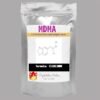Ecstasy (MDMA)
$140.00 – $1,750.00
Buy Ecstasy (MDMA) Online, (3-4 methylenedioxymethamphetamine) is a synthetic, psychoactive drug. Ecstasy has a chemical structure. Also, it is similar to the stimulant methamphetamine and the hallucinogen mescaline. MDMA is an illegal drug that acts as both a stimulant and psychedelic

Ecstasy (MDMA)

Ecstasy, also known as MDMA (methylenedioxymethamphetamine), is a synthetic psychoactive drug that belongs to the amphetamine class. It gained popularity in the 1980s and 1990s as a recreational drug and is commonly associated with the rave and nightclub scene. Ecstasy is known for its euphoric and empathogenic effects, creating a sense of heightened emotional connection and increased sociability. In this essay, we will explore the history, pharmacology, effects, and risks associated with ecstasy.
Buy Ecstasy (MDMA)
The history of ecstasy dates back to the early 20th century when it was first synthesized by the German pharmaceutical company Merck in 1912. Initially, it was developed as a potential appetite suppressant, but its psychoactive properties were not recognized until the 1970s. In the following decades, MDMA gained popularity as a therapeutic tool in psychotherapy, being used to enhance communication and facilitate emotional healing. However, due to its potential for abuse and adverse effects, it was classified as a Schedule I substance in the United States in 1985, making it illegal and prohibiting its use in medical settings.
Ecstasy (MDMA) for sale
Pharmacologically, ecstasy primarily acts on three neurotransmitters: serotonin, dopamine, and norepinephrine. It increases the release and inhibits the reuptake of these neurotransmitters, leading to a surge in their levels in the brain. This neurochemical activity is responsible for the drug’s psychoactive effects. Serotonin, in particular, plays a crucial role in regulating mood, emotions, and social behavior, which may explain the empathogenic and pro-social effects associated with ecstasy.
Ecstasy (MDMA) near me
The effects of ecstasy can vary depending on factors such as dose, purity, individual sensitivity, and environmental context. Typically, the drug is taken orally in the form of a tablet or capsule. The onset of effects is usually within 30 to 60 minutes, and they can last for several hours. Users often report feelings of increased energy, euphoria, emotional openness, and enhanced sensory perception. They may experience a heightened sense of empathy, feeling more connected and understanding towards others. This empathogenic quality has led to the use of ecstasy in therapeutic settings, although its safety and efficacy for this purpose remain controversial.
Buy Ecstasy (MDMA) online
While ecstasy is often associated with positive experiences, it is important to acknowledge the potential risks and adverse effects. The drug can cause significant changes in body temperature regulation, leading to hyperthermia or, in extreme cases, heatstroke. Users may experience dehydration, muscle cramping, and electrolyte imbalances, which can be exacerbated by vigorous physical activity, such as dancing for extended periods in hot environments. Additionally, ecstasy can have acute cardiovascular effects, including increased heart rate and blood pressure, which may pose risks for individuals with pre-existing heart conditions.
Long-term use of ecstasy has been associated with several potential health consequences. Chronic use may lead to neurotoxicity, affecting serotonin-producing neurons in the brain, potentially resulting in long-lasting changes in mood, cognition, and memory. Some research suggests that heavy or prolonged ecstasy use may contribute to increased risk of depression and anxiety disorders. However, the precise relationship between ecstasy use and these mental health outcomes is complex and influenced by various factors.
Another concern with ecstasy is its potential for adulteration or contamination. Illicitly manufactured tablets or capsules sold as ecstasy may contain other substances, such as amphetamines, caffeine, or synthetic cathinones (commonly known as “bath salts”). These adulterants can significantly increase the risks associated with ecstasy use and may lead to unexpected and potentially dangerous effects.
To mitigate the risks associated with ecstasy use, harm reduction strategies are crucial. These include using drug purity testing kits to identify adulterants, staying hydrated, taking breaks from physical activity, and avoiding excessive doses. Open and honest communication about drug use, as well as providing education on the potential risks and harm reduction strategies, can help promote safer recreational drug use practices.
In conclusion, ecstasy is a synthetic psychoactive drug that gained popularity for its euphoric and empathogenic effects. While it can elicit positive experiences and enhance social connection, it is not without risks. Adverse effects can include hyperthermia, cardiovascular changes, and potential neurotoxicity. Long-term use may be associated with mental health issues. Understanding the pharmacology, effects, and risks of ecstasy is essential for promoting informed decision-making and harm reduction among individuals who choose to use this substance.
| Quantity | 30 Pills, 50 Pills, 250 Pills, 500 Pills |
|---|
Be the first to review “Ecstasy (MDMA)” Cancel reply
Related products
MDMA
MDMA
MDMA
MDMA
MDMA
















Reviews
There are no reviews yet.